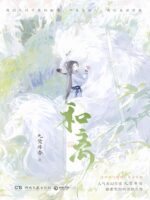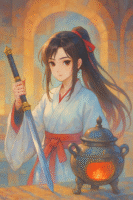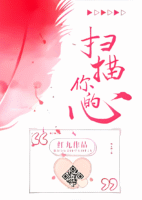I Have A Store C101
by MarineTLChapter 101 – Zhou Yimin’s Plan
Zhou Yimin had his own plan—he wanted to turn Zhoujiazhuang into a place where food and clothing were never a worry, establishing it as his base of operations for the turbulent decade to come.
He couldn’t rely on the riverbed alone. In another two or three years, once the severe drought passed, the river would flow again, and Zhoujiazhuang would lose that land.
So, the barren hills had to be put to use.
No matter the time or place, starch was essential. Whether for people or livestock, starch intake was indispensable.
The primary sources of starch were grains such as rice, wheat, corn, and sweet potatoes.
Rice and wheat had relatively low yields—at least for now, they weren’t sufficient. Moreover, both required good soil conditions, making them unsuitable for mountainous terrain.
Corn and sweet potatoes, however, could be cultivated on hillsides.
But that raised another issue.
Once land was cleared for farming, the harvested grains would be difficult to keep within the village. That would make it harder for the village to develop other things, such as poultry or pig farming.
To get around this, Zhou Yimin had given it a lot of thought.
The goal was to grow “crops” on the barren hills without formally clearing land—and they had to be starch-producing crops.
Sweet potatoes were a possible option, but they grew best in soft, loose soil. Mountain soil was hard and yielded poorly, sometimes making it more trouble than it was worth.
There were other choices, such as Chinese yam, cassava, and konjac.
These crops shared a common trait: they were toxic and required special processing. Cassava and konjac especially—Chinese yam was comparatively easier to handle; once peeled and cooked, it was edible, similar to taro.
Cassava and konjac, however, were much riskier—they could even poison cattle.
Cassava contained a toxic compound called linamarin. The usual method of detoxification was soaking for several days, though peeling sped up the process.
Konjac was toxic throughout the entire plant, especially the tuber, and couldn’t be eaten raw. It had to be processed—ground into powder, steamed, rinsed—to remove the toxins.
These two crops had extremely low soil requirements and high yields. Cassava, in particular, was rich in starch and nicknamed the “king of starch,” widely cultivated in the south.
Not only could they be used to feed pigs and chickens, but people could also eat them.
Though cassava was originally a tropical crop, it wasn’t impossible to grow in the north. Yields might be lower, but it could still be done.
So, the hills could be used not only to cultivate mushrooms but also to grow cassava and the like—as if they were wild. The yield didn’t matter much.
It would be a free-range planting approach, and the harvest left to fate.
Now that the riverbed development had gotten on track, Zhou Yimin felt it was time to turn his attention to the mountains.
In difficult times like these, leaving resources idle and unused meant you really couldn’t blame the heavens for not feeding you.
However, whether cassava or konjac, it was now past the ideal planting season. In places like Guangxi or Hainan, crops weren’t as season-dependent—you could grow all year round.
Not so in the north. People could freeze to death in winter, let alone crops.
So for now, he could only experiment with things that had shorter growth cycles, like mushrooms.
The old party secretary was still sighing. “What a shame vegetable crops can’t replace staple food.”
Otherwise, with how many vegetables they’d grown, no one would be going hungry.
Vegetables could supplement the diet, but they couldn’t be the main course.
Zhou Yimin nodded. “They cause edema—make you bloated.”
Using vegetables in place of staple grains wasn’t a new idea.
Over the past two years, as food became scarce, the government had adopted an emergency measure: replacing grains with fruits and vegetables, using side dishes as main dishes.
For example, they’d use high-yield crops like sweet potatoes, carrots, and white radishes as staple foods. In some places, even ground-up corn stalks were eaten.
This approach was known as “fruit and vegetable substitution,” or more formally, “substitute side dishes for staples.” It became a nationwide slogan after 1959.
“Exactly! Last year, someone in our village had edema. At first, we thought they’d just gotten fat,” the old secretary said with a bitter smile.
“That’s why we have to figure out a way to get more grain, even if it’s just coarse grain. I think it’s time we started developing those few mountains in the back,” said Zhou Yimin.
The deep forests could wait, but the surrounding hills near Zhoujiazhuang needed to be used.
“We don’t even need to properly clear them. Just plant and leave it be—harvest what we can when the time comes. Whatever we get is a bonus. Apart from feeding ourselves, we could also raise some chickens and ducks…” Zhou Yimin laid out his idea.
The old secretary listened intently.
It was certainly workable—a bit of a loophole, but it didn’t violate any regulations.
The only issue was the unpredictable yield. Free-range planting wasn’t just subject to poor growth; wild animals from the mountains could also be a problem.
But as Zhou Yimin said, even mosquito legs were still meat—every little bit helped.
“Later on, we could even fence in the mountains to raise chickens and let them forage freely,” Zhou Yimin added, borrowing the free-range poultry method used in modern times.
Chickens raised that way didn’t get fat easily, but it required much less effort and cost.
These ideas kept shaking the old secretary’s traditional thinking.
Suddenly, he felt like his entire mindset had opened up.
Of course, the precondition was still having seeds and chicks. Without them, it was all talk.
“Secretary, get a few people to fence off that mountain. This year, we’ll use that one to test the waters. I’ll figure out how to get chicken chicks. Once we raise them, the chickens we don’t eat in the village, I’ll buy them all and sell them to the steel factory,” Zhou Yimin continued.
Hearing that Zhou Yimin could get the chicks, the old secretary no longer hesitated.
He nodded. “Alright. I’ll get someone on it soon.”
The mountain Zhou Yimin had in mind was a small hill. Fencing it wasn’t a big project. With twenty or thirty people, they could get it done in a week or so.
They’d use whatever materials were available nearby—tree branches and such—to build the fence.
“As for mushroom cultivation, I’ll get familiar with it first and then teach everyone,” Zhou Yimin said.
The old secretary began to feel excited.
He already saw Zhou Yimin as the decision-maker of Zhoujiazhuang, while he was merely the executor—and he didn’t mind at all. As long as Zhoujiazhuang prospered, what did it matter? Serving as Zhou Yimin’s deputy suited him just fine.
If all of Zhou Yimin’s ideas could be realized, not only would everyone in the village have enough to eat—they might even become well-off.
That was the biggest reason he was happy to play “second fiddle” to Zhou Yimin.
Just then, someone on patrol shouted news from a distance: an outsider had entered the village.
“Who is it?” asked the old secretary.
“One of them is Dapeng. I don’t recognize the other,” the messenger replied.
“Then it’s fine. They’re probably looking for me,” Zhou Yimin said.
He trusted Dapeng. If someone was harmful or came with ill intent, Dapeng would never bring them to Zhoujiazhuang.
“I’ll go take a look.”
When he arrived, he found that it was Zhao Zhenguo.
Zhou Yimin could already guess the reason for his visit. Still, this eager? He’d tracked him all the way here?
(End of Chapter)










0 Comments